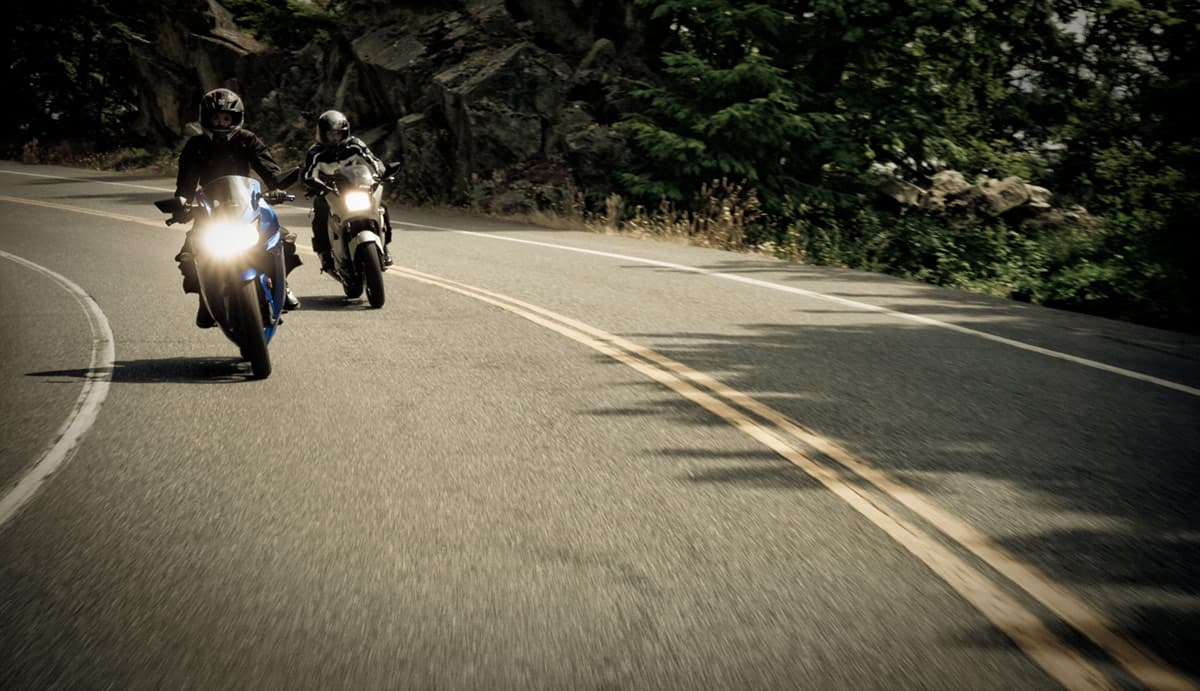Gyroscopic Effect
Countersteering is an unfortunate term. The name itself tends to create confusion before even getting started explaining what it means. It’s what we’ve got though, so we’ll have to just power through it.
So here we go….
Countersteering refers to the fact that to turn a motorcycle to the left, you have to first turn the front wheel to the right. The first time a person hears this they tend to think the person telling them is crazy. It’s counter intuitive, but there’s a lot of things about riding motorcycles that defy our intuition. The good news is that there is actual scientific reasons for those things to work, even though we don’t think they should. I hope that I can explain things well enough for them to make sense, and hopefully dispel some myths while I’m at it.
Motorcycles have to lean to turn. If your turn is slow enough, and wide enough, it doesn’t have to lean very much, but the faster and tighter you want to turn, the more your bike will have to lean.
A moving motorcycle doesn’t want to lean. It has two large spinning wheels which become gyroscopes. If you’ve ever played with a top, you have seen the gyroscopic effect in action. A top spinning at high speed is very stable, but as it slows down it starts to wobble, until it eventually falls over. The heavier a gyroscope is, and the faster it spins, the more powerful the gyroscopic effect.
So when we have two wheels spinning fast enough to propel us down the road at highway speeds, the motorcycle becomes very stable, and really wants to keep going in a straight line. If we want it to change direction, we will have to force it to.
If you are familiar with the idea of countersteering, you have probably heard that it’s the gyroscopic precession that makes the bike lean. When you force the axis that a gyroscope spins on to change, the gyroscope reacts by changing it’s pitch. So when you push forward on the left axis (axle) of a wheel, it reacts by leaning over to the left.
If you have a hard time making sense of that, all you have to do is hold a bicycle wheel by it’s axle, have someone spin it and start pushing the different sides of the axle forward.
If you aren’t careful, the force of the precession could make you drop the wheel.
That’s the most common explanation for why countersteering works, but it’s actually a very small part of the equation, and leads to a very common myth.
People who think that gyroscopic precession is the only reason why countersteering works tend to say that you turn the wheel the direction you want to go at low speeds, then at some magical speed you have to start countersteering.
I don’t believe in magic, and I think that if this was true we would have a solid number for the speed at which the change occurs, but instead we hear “at about 5km/h” or “over 30km/h”, and everything in between.
The reason that there’s no solid number for when you have to make the change from what people think of as “normal steering” to countersteering is that whether you realize it or not, you countersteer at every speed. It’s been ingrained in you since you first started riding a bicycle, and fell to the left the first time you tried to turn right.
Stay tuned.

